Your cart is currently empty!
Tag: Watch
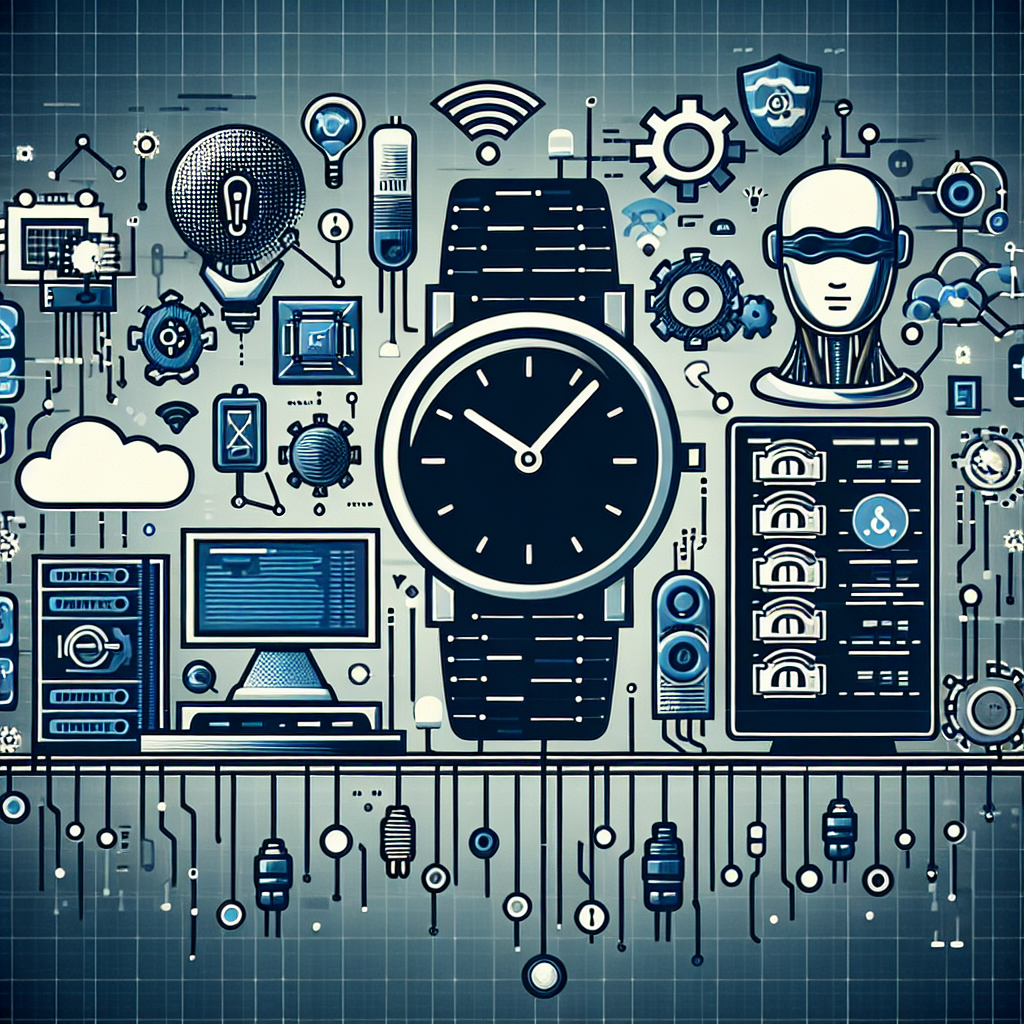
The Future of Data Center Monitoring: Innovations and Developments to Watch
Data centers play a crucial role in the digital age, serving as the backbone of modern businesses and organizations. With the increasing complexity and scale of data centers, there is a growing need for advanced monitoring solutions to ensure optimal performance, security, and efficiency. In this article, we will explore the future of data center monitoring and the innovations and developments to watch in the coming years.One of the key trends in data center monitoring is the shift towards real-time monitoring and analytics. Traditional monitoring tools typically provide historical data and static reports, which may not be sufficient to address the dynamic and rapidly changing nature of modern data centers. Real-time monitoring solutions, on the other hand, offer immediate insights into the performance of data center infrastructure, allowing for proactive troubleshooting and optimization.
Artificial intelligence (AI) and machine learning (ML) are also playing a significant role in the future of data center monitoring. These technologies can analyze vast amounts of data in real-time, identify patterns and anomalies, and predict potential issues before they occur. AI and ML-powered monitoring tools can help data center operators make more informed decisions, automate routine tasks, and improve overall efficiency.
Another important development in data center monitoring is the integration of software-defined networking (SDN) and network functions virtualization (NFV) technologies. SDN and NFV allow for greater flexibility and scalability in data center networks, but they also introduce new challenges in terms of monitoring and management. Monitoring solutions that can adapt to the dynamic nature of SDN and NFV environments will be essential for ensuring the performance and security of data center networks.
The rise of edge computing is also driving innovation in data center monitoring. With the increasing deployment of edge computing nodes closer to end-users, monitoring solutions need to be able to track and manage a distributed network of data centers. Edge-specific monitoring tools that can provide visibility into latency, bandwidth, and other performance metrics at the edge will be crucial for ensuring a seamless user experience.
In conclusion, the future of data center monitoring is characterized by real-time monitoring, AI and ML-powered analytics, SDN and NFV integration, and edge computing. By staying abreast of these innovations and developments, data center operators can ensure the reliability, security, and efficiency of their infrastructure in the years to come. As the digital landscape continues to evolve, data center monitoring will play an increasingly vital role in enabling businesses and organizations to stay ahead of the curve.
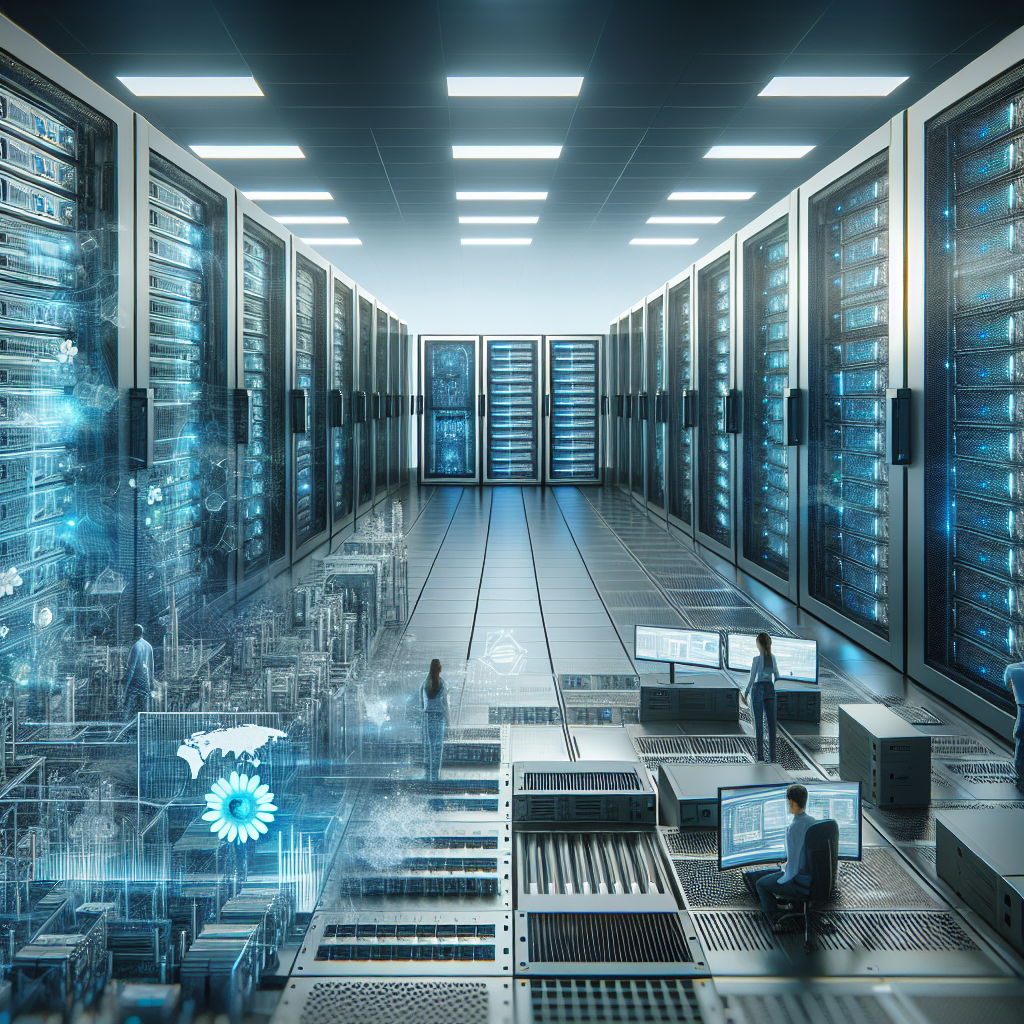
The Future of Data Center Servers: Trends and Technologies to Watch
The Future of Data Center Servers: Trends and Technologies to WatchData centers are the backbone of the modern digital economy, powering everything from social media platforms to e-commerce websites. As the demand for data storage and processing continues to grow, so too does the need for more powerful and efficient servers to handle the workload. In this article, we will explore the trends and technologies shaping the future of data center servers.
One of the most significant trends in data center servers is the move towards more energy-efficient and environmentally friendly designs. With the increasing focus on sustainability and reducing carbon footprints, data center operators are looking for ways to lower their energy consumption and operating costs. This has led to the development of servers that are designed to be more power-efficient, using technologies such as advanced cooling systems and low-power components.
Another key trend in data center servers is the shift towards more modular and scalable designs. As data centers continue to grow in size and complexity, the ability to quickly scale up or down server capacity is essential. Modular servers allow data center operators to easily add or remove server modules as needed, making it easier to adapt to changing workloads and demands.
In terms of technology, one of the most exciting developments in data center servers is the rise of artificial intelligence (AI) and machine learning. These technologies are being used to optimize server performance, automate maintenance tasks, and improve overall efficiency. AI-powered servers can analyze data in real-time, identify potential issues, and make adjustments to optimize performance and reliability.
Another technology to watch in the future of data center servers is the adoption of solid-state drives (SSDs) and non-volatile memory express (NVMe) storage. These technologies offer faster data access speeds and lower latency compared to traditional hard disk drives, making them ideal for high-performance computing applications. As the cost of SSDs continues to decrease, we can expect to see more data centers transition to these faster and more reliable storage solutions.
In conclusion, the future of data center servers is bright, with a strong focus on energy efficiency, scalability, and cutting-edge technologies such as AI and SSDs. By staying ahead of these trends and embracing the latest technologies, data center operators can ensure that their servers are able to handle the increasing demands of the digital economy. As we look towards the future, it is clear that data center servers will continue to play a vital role in powering the digital world.
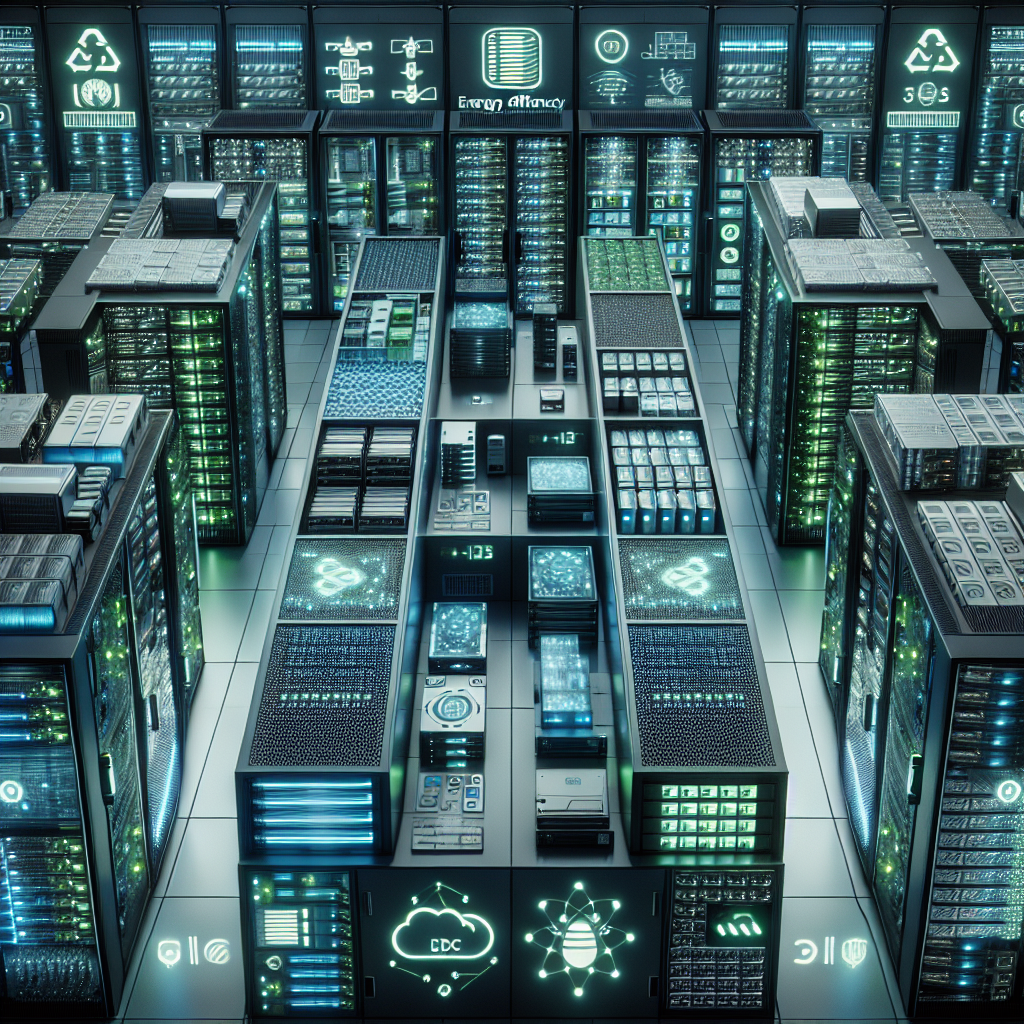
Data Center Storage Trends to Watch in 2021 and Beyond
Data centers play a crucial role in the modern digital landscape, serving as the backbone of the internet and powering a wide range of applications and services. As technology continues to evolve at a rapid pace, data center storage trends are constantly changing to keep up with the increasing demands for storage capacity, performance, and reliability. In 2021 and beyond, several key trends are shaping the future of data center storage.One of the most significant trends in data center storage is the shift towards cloud-based storage solutions. Cloud storage offers several benefits, including scalability, cost-effectiveness, and increased flexibility. As more businesses move their data and applications to the cloud, data centers are adapting by deploying cloud-native storage solutions that can seamlessly integrate with cloud platforms such as AWS, Azure, and Google Cloud.
Another important trend in data center storage is the adoption of solid-state drives (SSDs) and non-volatile memory express (NVMe) technology. SSDs offer faster read/write speeds and lower latency compared to traditional hard disk drives (HDDs), making them ideal for high-performance applications and workloads. NVMe technology further enhances the performance of SSDs by reducing latency and improving data transfer speeds. Data centers are increasingly deploying SSDs and NVMe storage to meet the growing demand for faster, more efficient storage solutions.
Data center storage is also becoming more software-defined, with the rise of software-defined storage (SDS) solutions. SDS decouples storage hardware from the software layer, allowing for greater flexibility and scalability. By virtualizing storage resources and automating data management tasks, SDS enables data centers to optimize storage performance and efficiency while reducing costs. As data centers continue to scale and deploy hybrid and multi-cloud environments, SDS is becoming a critical component of modern storage infrastructure.
In addition to these trends, data center storage is also evolving to address the increasing demand for data security and compliance. With the rise of data breaches and cyber threats, data centers are implementing advanced encryption and security protocols to protect sensitive data. Compliance regulations such as GDPR and CCPA are also driving data centers to adopt stringent data protection measures to ensure compliance with regulatory requirements.
Overall, the future of data center storage is focused on scalability, performance, and security. As data centers continue to expand and evolve, storage solutions will need to keep pace with the growing demands for storage capacity and performance. By embracing cloud-based storage, SSDs, NVMe technology, SDS, and advanced security measures, data centers can stay ahead of the curve and meet the challenges of the digital age.
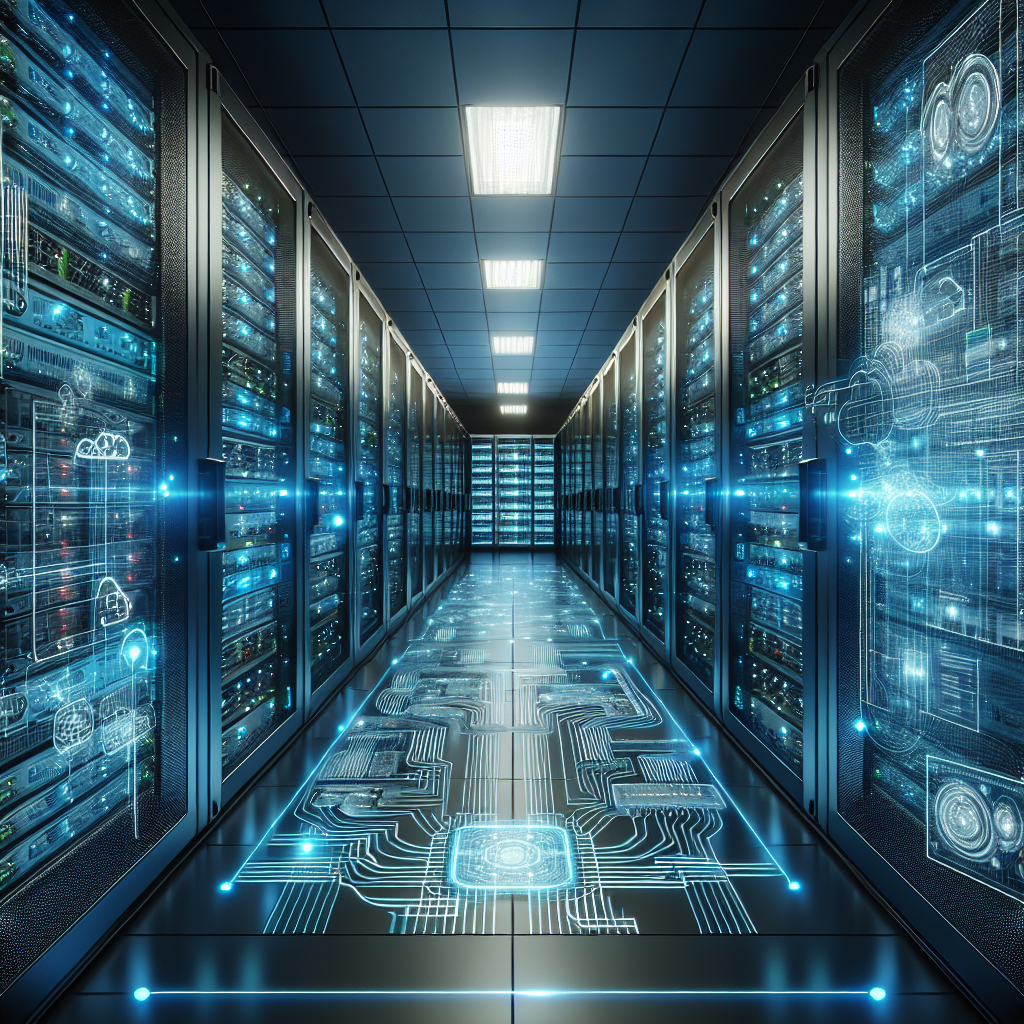
The Top Data Center Database Trends to Watch in 2021
As we move into 2021, the data center industry continues to evolve rapidly, with new technologies and trends shaping the way we store and manage data. In particular, database management is becoming increasingly important as organizations seek to handle vast amounts of data efficiently and securely. Here are some of the top data center database trends to watch in 2021:1. Cloud-based databases: Cloud computing has been a game-changer for data center operations, enabling organizations to store and access data remotely, without the need for on-premises infrastructure. Cloud-based databases offer scalability, flexibility, and cost-efficiency, making them an attractive option for many businesses.
2. AI-driven databases: Artificial intelligence (AI) and machine learning (ML) are revolutionizing the way data is managed and analyzed. AI-driven databases use advanced algorithms to optimize performance, automate tasks, and provide valuable insights from large datasets. In 2021, we can expect to see more organizations adopting AI-driven database solutions to improve efficiency and decision-making.
3. Edge computing databases: With the rise of IoT devices and the need for real-time data processing, edge computing has become increasingly important. Edge computing databases store and process data closer to the source, reducing latency and improving performance. In 2021, we can expect to see more organizations leveraging edge computing databases to support their distributed data processing needs.
4. Hybrid databases: Many organizations are adopting a hybrid approach to database management, combining on-premises and cloud-based solutions to meet their specific needs. Hybrid databases offer the best of both worlds, allowing organizations to benefit from the scalability and flexibility of the cloud while maintaining control over sensitive data. In 2021, we can expect to see more organizations embracing hybrid database solutions to achieve a balance between performance and security.
5. Blockchain databases: Blockchain technology is gaining traction in the data center industry, offering a secure and transparent way to store and manage data. Blockchain databases use a decentralized network of nodes to verify and record transactions, ensuring data integrity and security. In 2021, we can expect to see more organizations exploring blockchain databases as a way to enhance data security and trust.
In conclusion, the data center database landscape is constantly evolving, with new technologies and trends shaping the way organizations store and manage data. In 2021, we can expect to see a greater emphasis on cloud-based, AI-driven, edge computing, hybrid, and blockchain databases as organizations seek to optimize performance, security, and scalability. By staying informed about these trends and adopting the right database solutions, organizations can position themselves for success in the digital age.
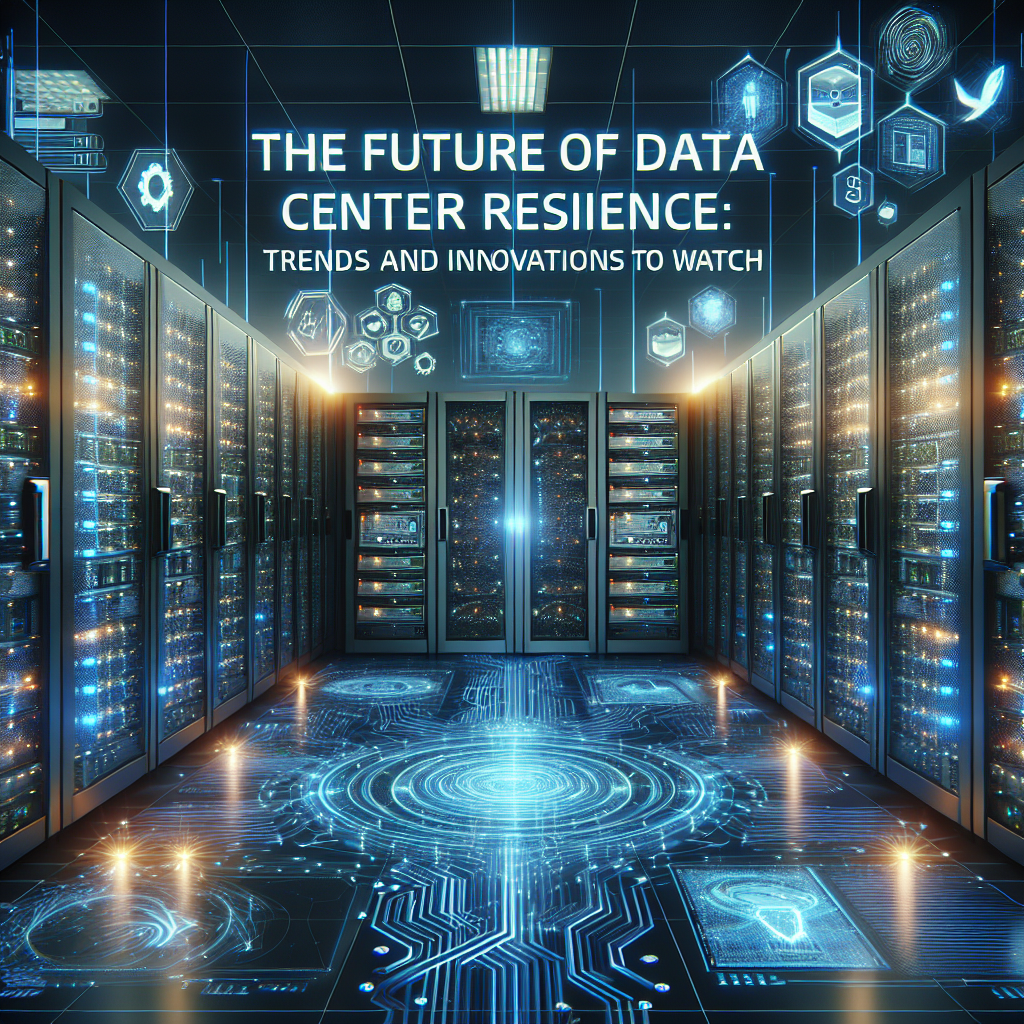
The Future of Data Center Resilience: Trends and Innovations to Watch
In today’s digital age, data centers play a crucial role in storing and processing vast amounts of information. They are the backbone of the internet and are essential for businesses to operate efficiently. With the increasing reliance on data centers, the need for resilience and reliability has become more important than ever.As technology continues to evolve, so do the threats and challenges that data centers face. From natural disasters to cyber attacks, data centers must be prepared to withstand any potential disruptions. This has led to a growing focus on improving data center resilience through innovative technologies and trends.
One of the key trends in data center resilience is the adoption of cloud computing. Cloud-based data centers offer increased flexibility and scalability, allowing businesses to easily expand their infrastructure as needed. This helps to reduce the risk of downtime and improve overall resilience.
Another trend is the use of artificial intelligence (AI) and machine learning to enhance data center resilience. These technologies can help to predict and prevent potential issues before they occur, leading to improved reliability and performance.
In addition, the rise of edge computing is changing the way data centers are structured. By moving computing resources closer to the end user, edge data centers can reduce latency and improve reliability. This distributed approach helps to ensure that data is always available, even in the event of a network outage.
As data centers continue to face new challenges, it is essential for businesses to stay ahead of the curve and embrace these trends and innovations. By investing in the latest technologies and strategies, organizations can ensure that their data centers remain resilient and reliable in the face of any threat.
In conclusion, the future of data center resilience lies in embracing innovative technologies and trends such as cloud computing, AI, machine learning, and edge computing. By staying ahead of the curve and investing in these advancements, businesses can ensure that their data centers are prepared for whatever challenges may come their way.
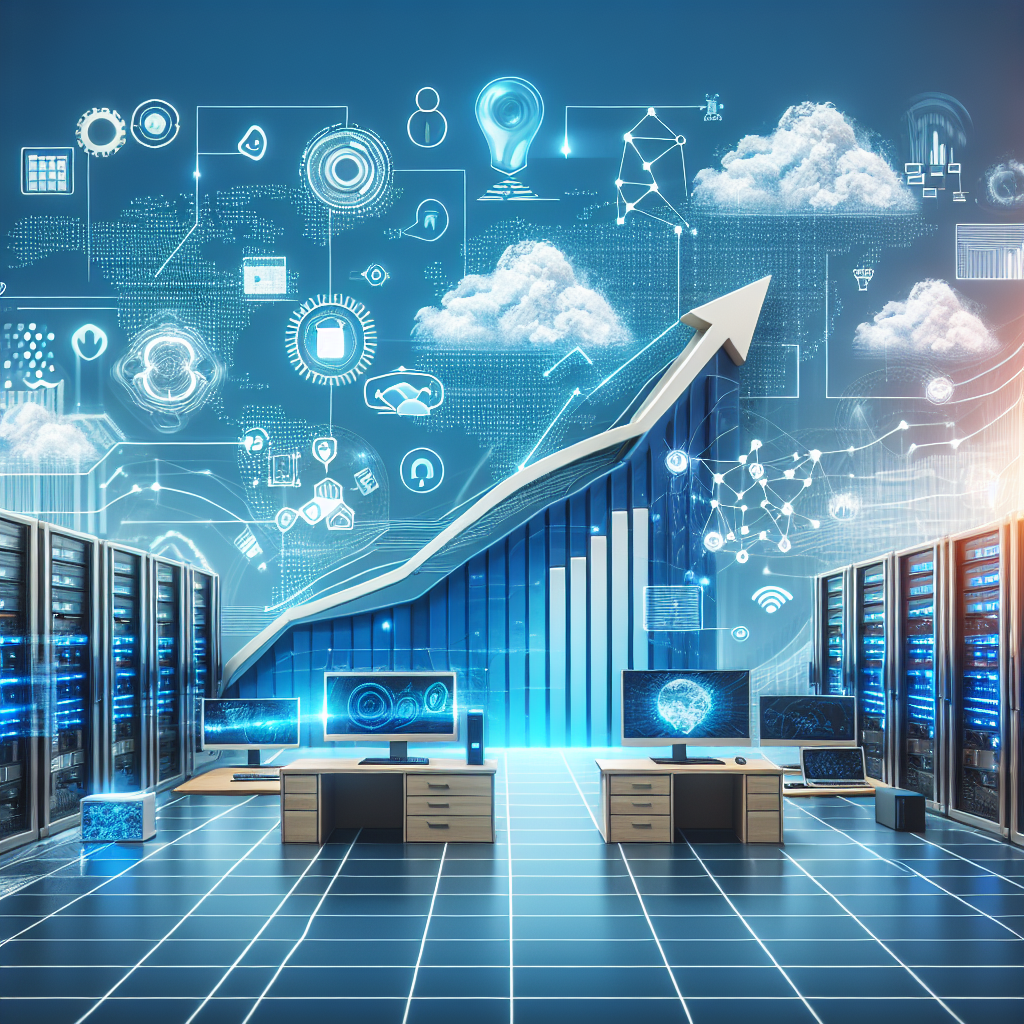
The Future of Data Center Auditing: Trends and Technologies to Watch
Data centers are crucial components of modern business operations, housing the servers and networking equipment that support the digital infrastructure of companies worldwide. With the increasing reliance on data-driven decision-making and the exponential growth of data volumes, the need for robust data center auditing practices has never been more critical.As technology continues to evolve at a rapid pace, data center auditing practices are also evolving to keep pace with changing requirements and challenges. In this article, we will explore some of the key trends and technologies shaping the future of data center auditing.
1. Automation
Automation is a key trend in data center auditing, as organizations look to streamline processes and reduce human error. Automated tools can help audit and monitor data center systems in real-time, ensuring that any issues are quickly identified and addressed. Automation can also help with compliance management, by providing continuous monitoring of data center operations and generating reports on compliance status.
2. AI and Machine Learning
Artificial intelligence (AI) and machine learning technologies are increasingly being used in data center auditing to analyze vast amounts of data and identify patterns or anomalies that may indicate potential issues. These technologies can help organizations proactively detect and prevent security breaches or performance issues, improving overall data center efficiency and reliability.
3. Cloud-based Auditing
Cloud-based auditing solutions are becoming more popular, as organizations move their data center operations to the cloud. Cloud-based auditing tools can provide real-time visibility into cloud-based infrastructure, enabling organizations to monitor and audit their data center operations from anywhere, at any time. These tools can also help organizations ensure compliance with industry regulations and standards.
4. Blockchain Technology
Blockchain technology is another emerging trend in data center auditing, as organizations seek to improve data integrity and security. Blockchain technology can provide a tamper-proof record of data center operations, ensuring that audit trails are secure and accurate. By using blockchain technology, organizations can enhance the trustworthiness of their auditing processes and improve data center security.
5. Compliance Management
Compliance management is a critical aspect of data center auditing, as organizations must adhere to various regulations and standards to protect sensitive data and ensure operational efficiency. Advanced auditing tools now offer compliance management features that help organizations track and monitor their compliance status, generate compliance reports, and automate compliance processes.
In conclusion, the future of data center auditing is bright, with emerging trends and technologies revolutionizing the way organizations monitor and manage their data center operations. Automation, AI, cloud-based auditing, blockchain technology, and compliance management are just a few of the key trends shaping the future of data center auditing. By embracing these technologies and trends, organizations can enhance data center security, improve operational efficiency, and ensure compliance with industry regulations and standards.
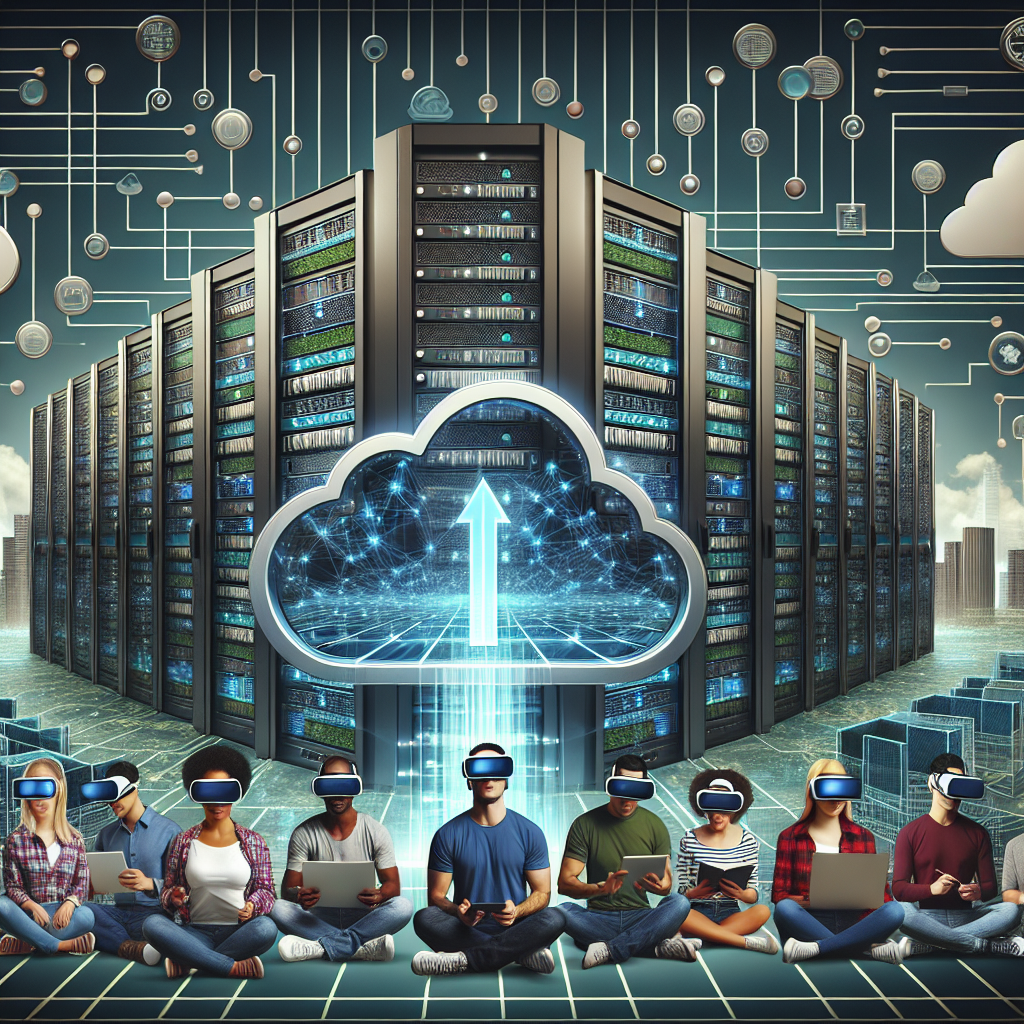
The Future of Data Center Training: Trends and Innovations to Watch
Data centers are the backbone of modern technology, serving as the hub for storing, processing, and managing vast amounts of data. With the increasing demand for data center services, the need for skilled professionals to manage and maintain these facilities is also on the rise. As technology continues to evolve, so too must the training programs that prepare individuals for careers in the data center industry.In recent years, there have been several trends and innovations in data center training that are shaping the future of this field. From virtual reality simulations to hands-on experience with cutting-edge technology, here are some key developments to watch out for in the future of data center training.
One of the most significant trends in data center training is the use of virtual reality (VR) simulations to provide hands-on experience in a safe and controlled environment. These simulations allow trainees to practice troubleshooting and maintenance tasks in a realistic setting, without the risk of causing damage to actual equipment. By immersing trainees in a virtual data center environment, they can gain valuable experience and develop the skills necessary to succeed in the field.
Another innovation in data center training is the use of gamification to make learning more engaging and interactive. By incorporating game elements such as points, levels, and rewards into training programs, instructors can motivate trainees to stay focused and actively participate in their education. Gamification can also help to make complex concepts more accessible and easier to understand, leading to improved learning outcomes.
In addition to virtual reality and gamification, there is a growing emphasis on hands-on experience with the latest technology in data center training programs. Trainees are now being given the opportunity to work with cutting-edge equipment and software, allowing them to gain practical skills that are directly applicable to real-world data center environments. By providing hands-on experience, training programs can better prepare individuals for the challenges they will face in their careers.
As technology continues to advance, the future of data center training will likely be shaped by even more innovative trends and developments. From artificial intelligence and machine learning to automation and robotics, there are countless opportunities for new technologies to revolutionize the way we train and educate future data center professionals. By staying ahead of these trends and embracing innovation, training programs can ensure that they are preparing individuals for successful careers in the data center industry.
In conclusion, the future of data center training is bright, with exciting trends and innovations on the horizon. By incorporating virtual reality simulations, gamification, and hands-on experience with cutting-edge technology, training programs can better prepare individuals for careers in the data center industry. As technology continues to evolve, it is essential that training programs adapt and embrace new trends to ensure that they are providing the most effective education possible. With a focus on innovation and forward-thinking, the future of data center training is sure to be both challenging and rewarding for those looking to enter this dynamic field.
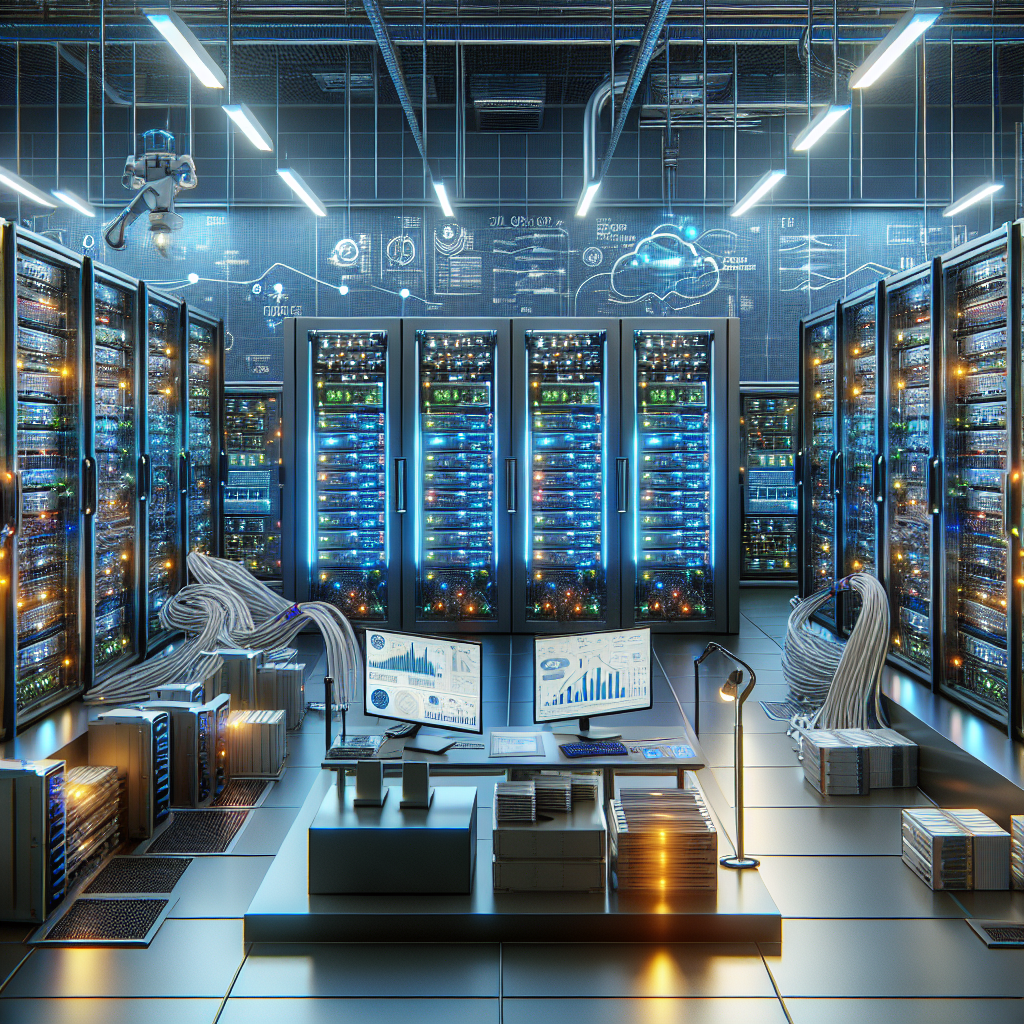
Emerging Trends in Data Center Servicing: Innovations and Technologies to Watch
Data centers play a crucial role in today’s digital world, serving as the backbone of the internet and housing the vast amounts of data that power our daily lives. As technology continues to evolve at a rapid pace, data center servicing is also undergoing significant changes to keep up with the increasing demands for storage, processing power, and security. In this article, we will explore some of the emerging trends in data center servicing, including innovations and technologies to watch.One of the most significant trends in data center servicing is the shift towards edge computing. Edge computing involves processing data closer to where it is generated, rather than relying solely on centralized data centers. This approach reduces latency and improves the speed and reliability of data processing, making it ideal for applications that require real-time data analysis, such as autonomous vehicles and IoT devices. As a result, data centers are increasingly incorporating edge computing capabilities to meet the growing demand for low-latency, high-performance computing.
Another key trend in data center servicing is the adoption of artificial intelligence (AI) and machine learning (ML) technologies. AI and ML are being used to optimize data center operations, automate routine tasks, and improve energy efficiency. For example, AI-powered predictive maintenance can help data center operators identify potential issues before they occur, reducing downtime and maximizing equipment lifespan. ML algorithms can also analyze data center performance metrics to identify opportunities for optimization and cost savings.
In addition to edge computing and AI/ML technologies, data center servicing is also seeing advancements in cooling and power management solutions. As data centers continue to grow in size and complexity, efficient cooling systems are essential to prevent overheating and ensure optimal performance. Innovations such as liquid cooling, thermal storage, and advanced air-flow management techniques are being adopted to improve energy efficiency and reduce operating costs.
Furthermore, data center operators are exploring renewable energy sources and energy storage solutions to reduce their carbon footprint and increase sustainability. Solar panels, wind turbines, and fuel cells are being integrated into data center facilities to generate clean energy, while battery storage systems can store excess energy for use during peak demand periods. These initiatives not only benefit the environment but also help data centers reduce their reliance on traditional energy sources and lower operating costs.
Overall, the future of data center servicing is bright, with exciting innovations and technologies driving the industry forward. From edge computing and AI/ML to advanced cooling and power management solutions, data center operators are constantly seeking new ways to improve efficiency, reliability, and sustainability. By staying abreast of these emerging trends and investing in cutting-edge technologies, data centers can continue to meet the evolving needs of the digital economy and deliver seamless and reliable services to users around the world.
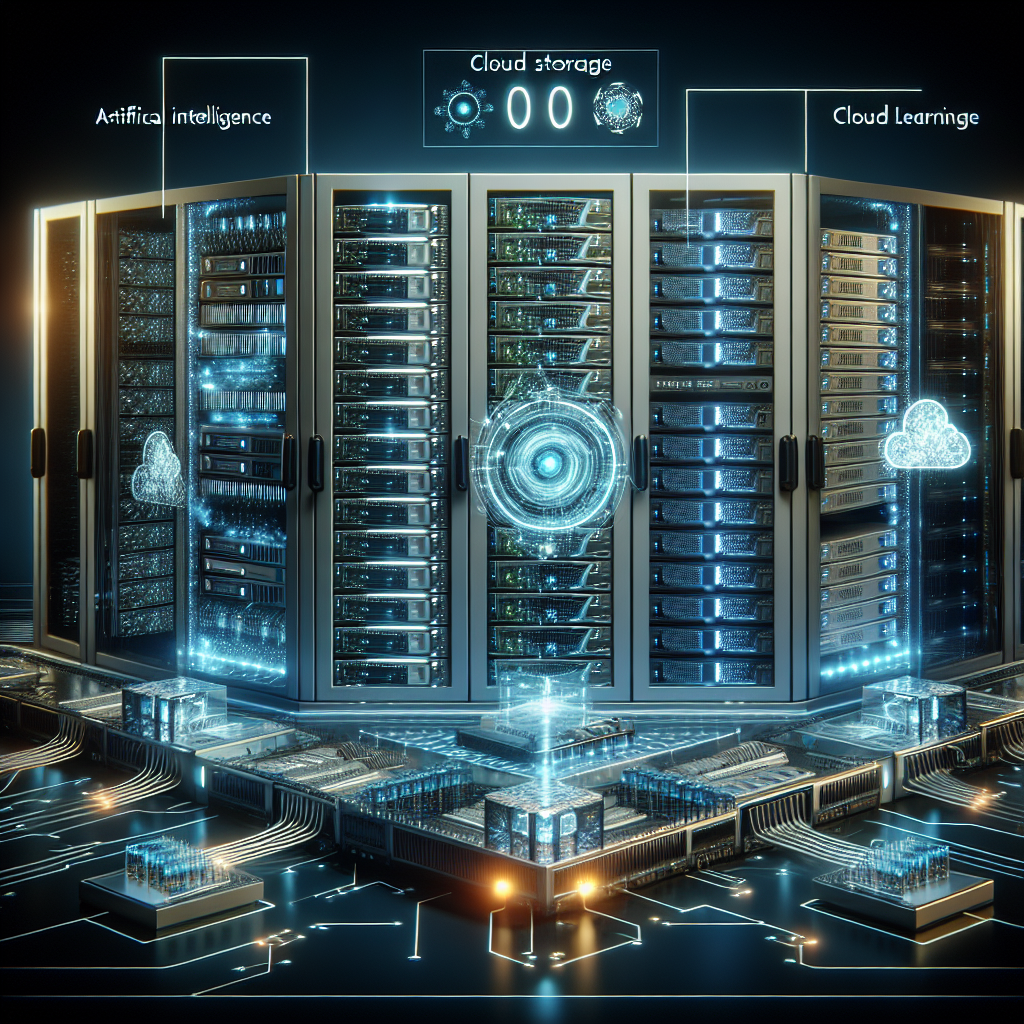
The Future of Data Center Servers: Trends to Watch in 2021 and Beyond
In recent years, the data center industry has seen significant advancements in technology, driving changes in the way servers are designed and utilized. As we look ahead to 2021 and beyond, there are several key trends shaping the future of data center servers.One major trend to watch is the rise of edge computing. As more devices become connected to the internet, the demand for low-latency processing at the edge of the network is increasing. This trend is driving the need for smaller, more powerful servers that can be deployed closer to end-users. In response, server manufacturers are developing new form factors and architectures optimized for edge computing workloads.
Another trend to keep an eye on is the growing adoption of artificial intelligence (AI) and machine learning (ML) in data centers. These technologies require massive amounts of computational power, leading to the development of specialized AI and ML accelerators that can be integrated into server designs. As AI and ML workloads become more prevalent, we can expect to see servers that are optimized for these types of tasks.
In addition, sustainability is becoming a top priority for data center operators. The environmental impact of data centers, particularly in terms of energy consumption, has come under scrutiny in recent years. As a result, server manufacturers are focusing on developing more energy-efficient designs that reduce power consumption and carbon emissions. This trend is expected to continue in the coming years, with data center servers becoming increasingly environmentally friendly.
Security is also a major concern for data center operators, particularly in light of increasing cyber threats and data breaches. Server manufacturers are investing in new security features, such as hardware-based encryption and secure boot processes, to protect sensitive data and prevent unauthorized access. In the future, we can expect to see servers that are designed with security as a top priority.
Overall, the future of data center servers is shaping up to be dynamic and innovative. As edge computing, AI and ML, sustainability, and security continue to drive advancements in server technology, we can expect to see servers that are more powerful, efficient, and secure than ever before. By staying abreast of these trends and adapting to the changing landscape, data center operators can ensure that their infrastructure remains cutting-edge and competitive in the years to come.
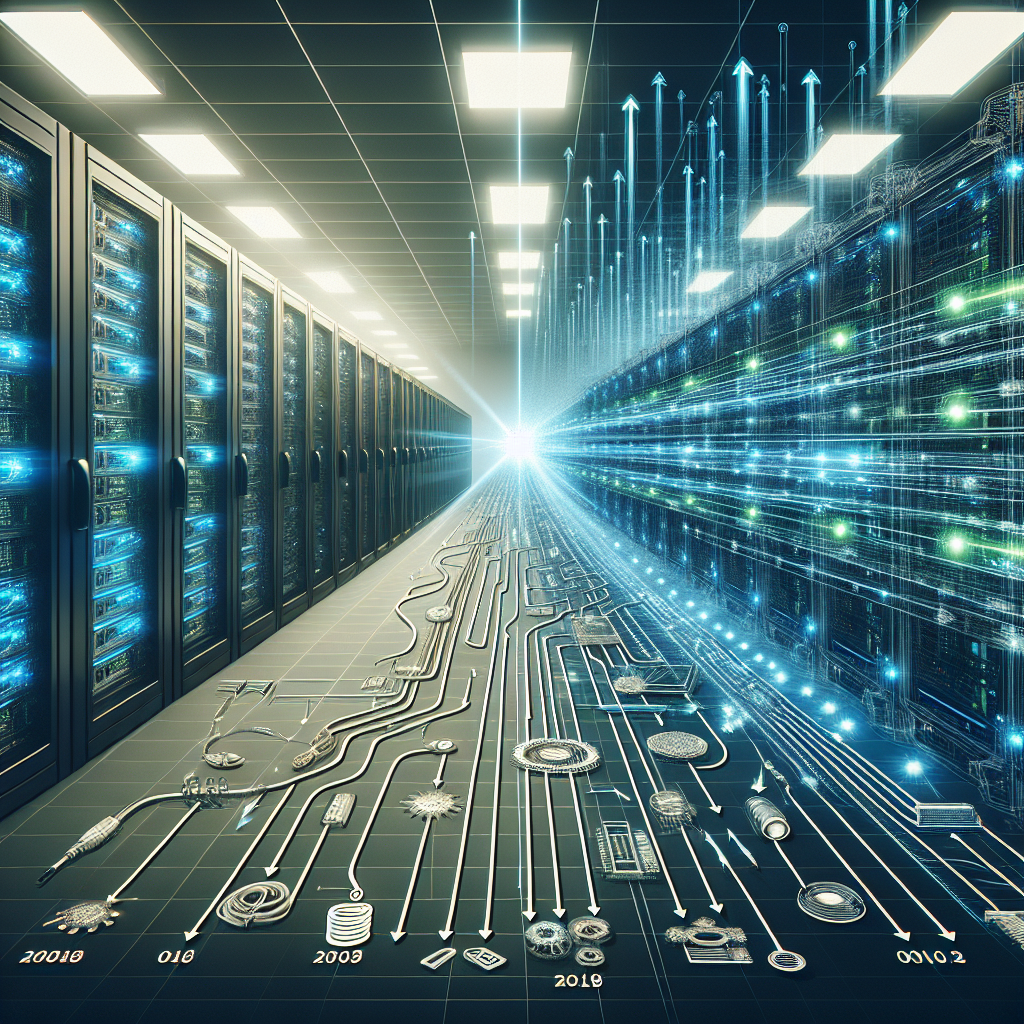
The Evolution of Data Center Cabling: Trends and Technologies to Watch
Data centers have come a long way since their inception in the 1960s. From the early days of punch cards and mainframe computers to today’s cutting-edge cloud-based infrastructure, data centers have evolved at a rapid pace. One area of particular importance in this evolution is data center cabling.Data center cabling plays a critical role in the overall performance and reliability of a data center. As technology continues to advance and data volumes continue to grow, data center cabling must keep pace to ensure optimal connectivity and data transmission speeds.
One of the key trends in data center cabling is the move towards higher speeds and greater bandwidth. With the rise of data-intensive applications such as artificial intelligence, machine learning, and big data analytics, data centers are under increasing pressure to deliver faster and more reliable connections. This has led to the development of new cabling technologies such as Category 8 Ethernet cables, which support speeds of up to 40 gigabits per second (Gbps) over distances of up to 30 meters.
Another trend in data center cabling is the move towards more efficient and environmentally friendly solutions. As data centers consume large amounts of energy, there is a growing emphasis on reducing power consumption and carbon emissions. This has led to the development of technologies such as Power over Ethernet (PoE), which allows devices to be powered over the same Ethernet cable that carries data, reducing the need for additional power cables and outlets.
In addition to higher speeds and greater efficiency, data center cabling is also evolving to meet the demands of emerging technologies such as 5G, edge computing, and the Internet of Things (IoT). These technologies require high-speed, low-latency connections between devices, which has led to the development of new cabling solutions such as fiber optic cables and multi-mode cables.
Looking ahead, there are several key technologies to watch in the evolution of data center cabling. One of these is the development of single-mode fiber optic cables, which offer faster data transmission speeds and greater bandwidth than traditional copper cables. Another technology to watch is the emergence of modular cabling solutions, which allow data center operators to easily upgrade and expand their cabling infrastructure as needed.
Overall, the evolution of data center cabling is driven by the need for faster, more reliable connections in an increasingly data-driven world. As technology continues to advance, data center cabling will play a crucial role in ensuring that data centers can keep up with the demands of modern computing. By staying abreast of the latest trends and technologies in data center cabling, organizations can ensure that their data centers remain at the cutting edge of performance and reliability.
